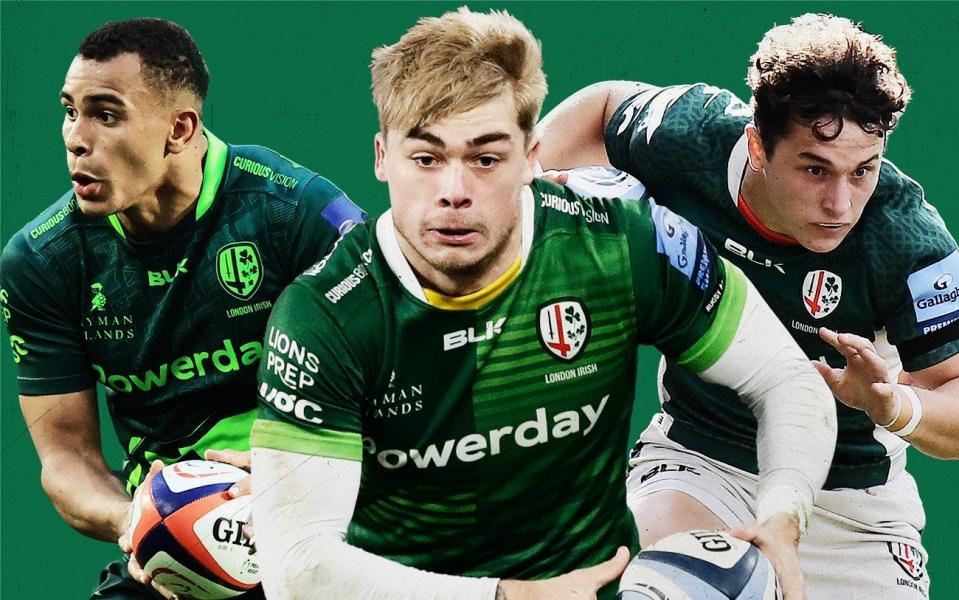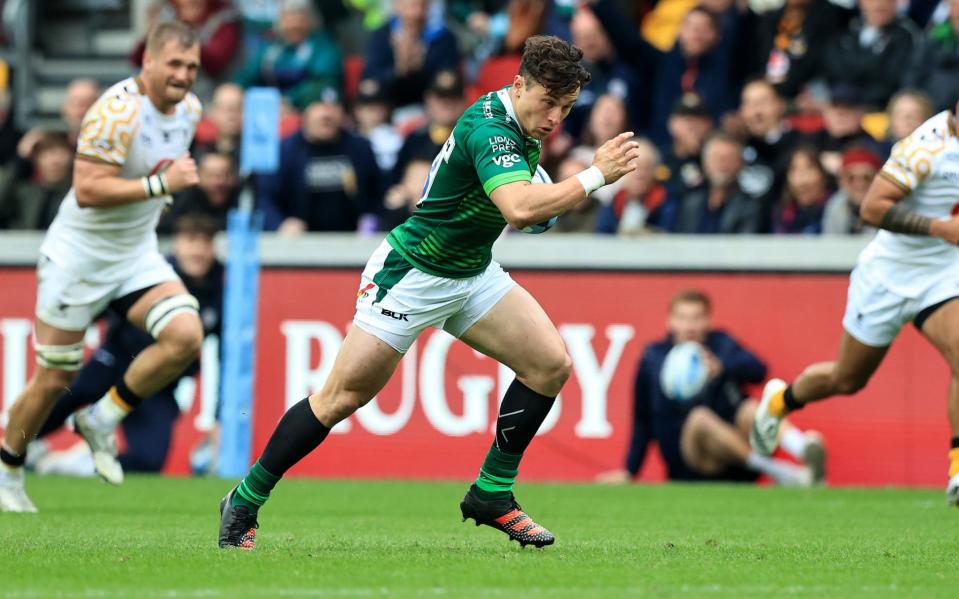
London Irish have always produced outstanding players: the only issue was keeping hold of them.
The club’s turbulent period in the 2010s bouncing between the Gallagher Premiership and RFU Championship led to top prospects including Anthony Watson, Jonathan Joseph, Joe Cokanasiga (all England internationals) and Johnny Williams (Wales) understandably taking their talents elsewhere.
Now the club is producing Test players again with Henry Arundell, Ollie Hassell-Collins and Will Joseph all making their England debuts since last summer.
Except compared to when the previous wave of stars broke through, behind the scenes this time is a juggernaut of an operation, running what London Irish can claim with some merit to be the best academy system in the country ahead of their St Patrick’s Day Party against Northampton Saints in Brentford on Saturday.
Around a third of London Irish’s senior squad are currently academy graduates, but a bigger target has been set – 50 percent. At a time when squads are shrinking and budgets remain frugal, focusing internally makes sense. “
We have a responsibility to develop young men, not just rugby players, that the first team would want in their high performance environment,” stresses Jack Pattinson, the club’s Under-18 manager.

The club have seen three players turn out for England Under-18s in the recent Six Nations – Rory Taylor, Ralph McEachran and Kepu Tuipolutu – with a quartet playing for Under-20s in Chandler Cunningham-South, Afolabi Fasogbon, Calum Scott and Monty Bradbury. .
Cunningham-South’s name may be familiar – the 20-year-old has been tearing up trees in the Premiership. “We are pretty much market-leading in that [England U18s and U20s] area,” notes Patrick O’Grady, the club’s academy manager, with the difference now being that Arundell and the rest are playing senior Test rugby.
“It took three or four years [after promotion] for [the club] to become stable and to get more investment into the academy. If you look across all the clubs, there is a direct correlation between staffing and player output. We have the balance right now. We have a great group of staff [with now 14 members]and a lot of consistency which is key.
Some academies have a high staff turnover and they’re always refreshing and restarting. Whereas we are building year on year. Anything we do has a multi-disciplinary approach from strength and conditioning, physio, coaching, psychology, nutrition all to ultimately do the best for each individual player.”
The club’s academy sites cover three counties: Berkshire (at Reading RFC), Hampshire (Applemore College in Southampton), and the club’s share of Middlesex which is split three ways with Harlequins and Saracens.
Irish’s patch, north of the river, includes Acton, the old home of Wasps, as well as Harrow School and the club’s home at Hazelwood. Reading has been a particularly fruitful site when it comes to producing first team players.
Through the Under-14, Under-15 and Under-16 levels of the club’s Developing Player Program there are over 200 players spread across each age group, with roughly 40 players at each of the club’s five sites.
By the time you get to Under-18 level, factoring in players switching their focus to academic work and dropping out of the sport with the club also retaining the best talents, that number drops to 45. From there, a handful will join the club on senior academy contracts.
“Those exits and the next steps are important for us,” explains Rhys Davies, the club’s DPP manager. “Even if they’re going to university, we keep an eye on those guys. If one of those players was to come back we would pride ourselves on that, because we’ve worked hard with them when they’re here. Coming back into the environment is nice to see.”
Why then is London Irish’s academy unique? The DPP manager and academy leads have a designated day to visit each of the team’s five sites throughout the week, as opposed to rotating through one site every four or five weeks as is the case with other clubs.
“While it’s more costly to have all those sites, it is certainly proving beneficial. You get even more buy-in from the players because of that constant contact,” O’Grady adds.
‘We’ve changed someone’s life from having nothing to amazing’
A shared ethos when it comes to playing style throughout the club is another factor. Davies and Pattinson recall that after a recent U16s game against Bath the club were praised for the tactical consistency shown across their age groups during the past two years. Discussions between the two coaches during the handover process as players move up from the DPP to U18s are made easier given their lifelong friendship – Davies was best man at Pattinson’s wedding.
“We’re trying to keep the door open for as long as possible. We can’t be making terminal decisions at the age of 15 or 16 that players are going to be in the Premiership,” Pattinson adds. The club’s connections with Harrow and Wellington College have another advantage when it comes to scholarship opportunities.
“There are numerous times where we’ve changed someone’s life drastically from having nothing to an amazing opportunity just through playing rugby. It’s a good part to play,” adds Davies, with the club’s academy intake from state and private schools being a 50- 50 splits.
London Irish’s recent U18 League title win over Northampton was a proud moment for Pattinson for one reason in particular. “One individual in the group went through a very difficult time with a family situation over Christmas. Without saying anything at all as a coach, how the boys gathered around him, responded to that, was quite inspiring. That goes beyond rugby.”
That crop of U18 players will now be hoping to represent London Irish’s senior side and potentially England, with the success of Arundell and Joseph helping to inspire. Clips of the duo progressing through the club’s age groups were shown at the academy’s induction at the start of the season.
As for the coaches, watching players who arrived at London Irish at the age of 14 go on to play for the senior side serves as ample motivation.
“When the boys make their debut for the first team, it’s just immense pride,” O’Grady adds. “The years that have gone into developing them as individuals, it’s like a reward straight away. The fulfillment you get… I can’t even describe it.”